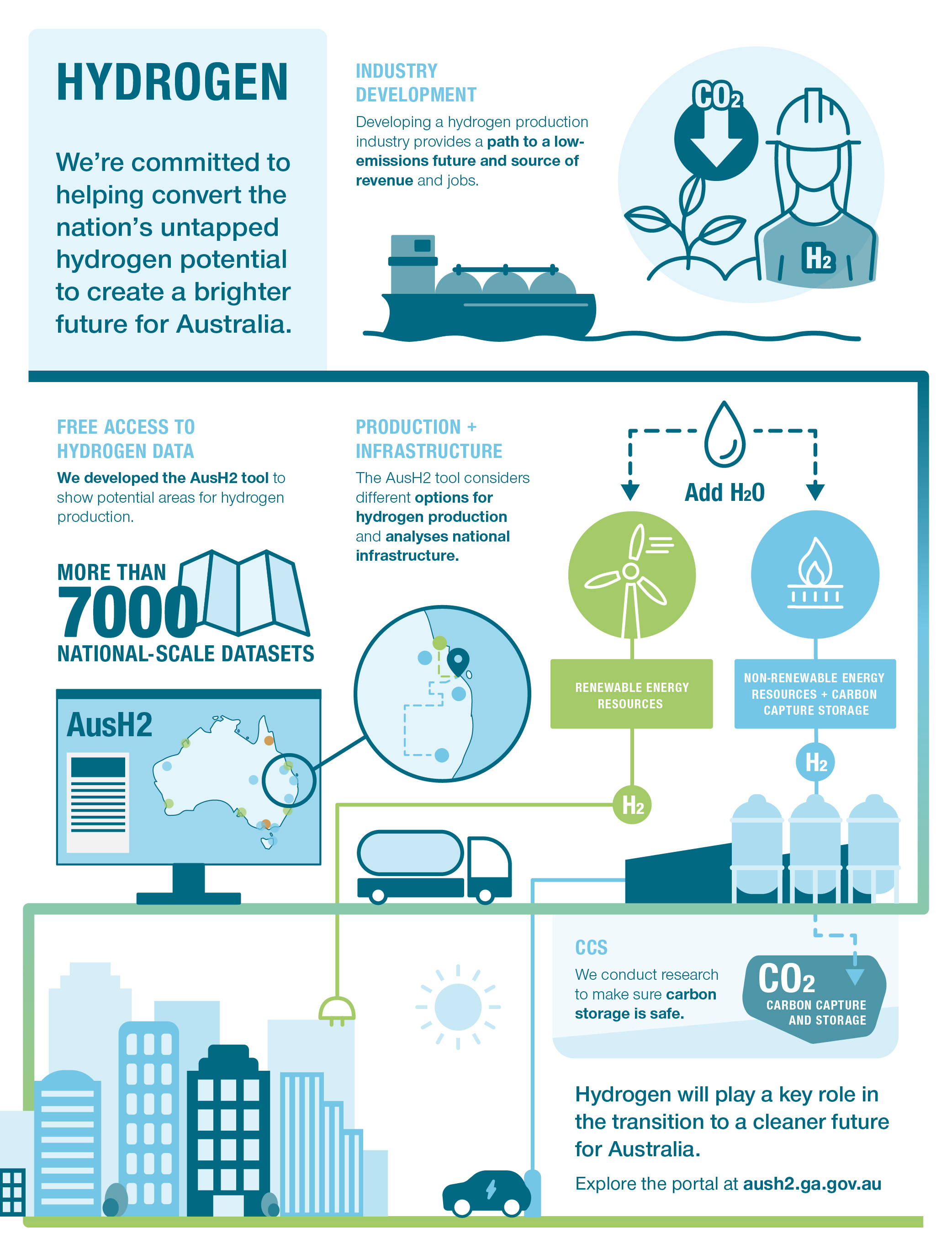News
Mapping Australia’s hydrogen future
Published:23 November 2020
Mapping Australia’s hydrogen future
Geoscience Australia is supporting Australia’s increased use of low emissions technology with a world-first tool that maps the nation’s clean hydrogen potential.
Geoscience Australia is supporting Australia’s increased use of low emissions technology with a world-first tool that maps the nation’s clean hydrogen potential.
Chief of the Minerals, Energy and Groundwater Division at Geoscience Australia, Dr Andrew Heap said Australia’s Hydrogen Opportunities Tool (AusH2) is designed to help industry and government decision makers identify areas across Australia with high potential for hydrogen production.
“AusH2 gives users free access to online mapping tools and more than 7000 national-scale datasets, including sites of major infrastructure, maps of renewable energy resources, and the location of hydrogen projects and research centres. Using these tools and datasets, decision makers can produce their own tailored maps of hydrogen production potential for different scenarios at both a national and regional scale,” Dr Heap said.
“Australia already has many of the prerequisites needed to be a world leader in hydrogen production – abundant land and natural resources, extensive carbon storage reservoirs, and a reputation as a trusted energy exporter.
“Geoscience Australia’s experience working with the resources sector demonstrates that easy access to the tools and datasets in AusH2 can really help shape investment and policy decisions.”
Dr Heap said with opportunities for renewable based or green hydrogen production spread across the state and territories, AusH2 gives decisions makers a detailed picture they can use to evaluate their investment options.
“Before launching AusH2, Geoscience Australia estimated that more than 200,000 square kilometres of Australia was highly prospective for renewables-based or green hydrogen production.

“Producing green hydrogen relies on a range of factors, including access to sufficient wind, solar or hydro resources and necessary infrastructure such as roads, ports and pipelines, and AusH2 contains all that information so that decision makers can quickly identify areas with the highest potential.
“AusH2 also includes datasets to assess where hydrogen can be produced using non-renewable energy resources and draws on the research Geoscience Australia has been undertaking into carbon capture and storage. This includes assessing how much CO2 could be stored in different geological basins and evaluating different CO2 monitoring techniques.”
Dr Heap said AusH2 was just one example of how Geoscience Australia has been sharing its knowledge and expertise to support the development of clean hydrogen technologies, which were identified as a priority in the first Low Emissions Technology Statement released in September 2020.
“As clean hydrogen has gathered momentum as a potential future energy source and export market, we have been working across the Australian Government and sharing our analysis of Australia’s hydrogen potential,” Dr Heap said.
“In September 2019, we released the Hydrogen production regions in Australia report, which was prepared to help inform Australia’s National Hydrogen Strategy.
“The future is bright for hydrogen in Australia. We are committed to applying our expertise and experience to helping the Australian Government convert the nation’s untapped potential into a clean, innovative, safe and successful hydrogen industry for all Australians.”
Visit the Energy Resources section on the Geoscience Australia website to learn more about hydrogen in Australia.




